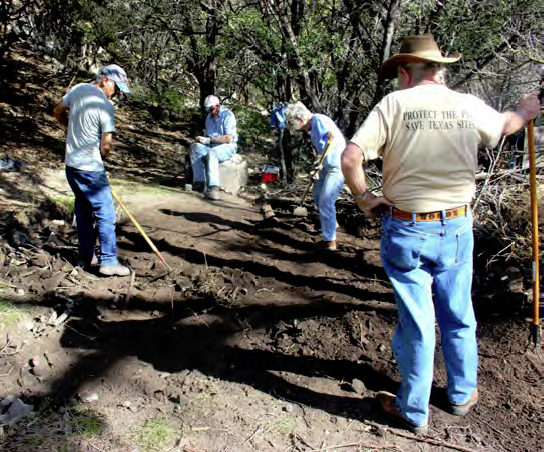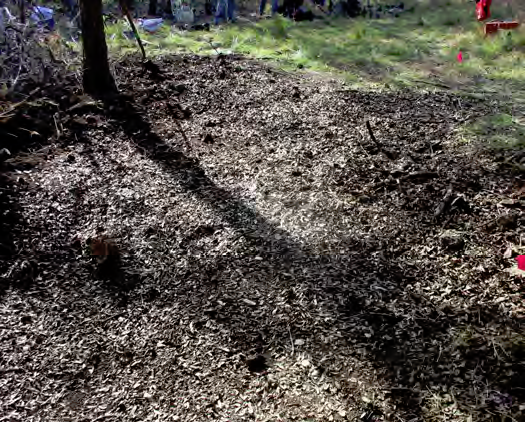Hill County Archeological Association helps TPWD stabilize prehistoric
sites at the Kerr WMA


 On December 3rd and 4th 2013, six volunteers from the Hill Country Archeological Association along with three from the Texas Archeological Stewards Network of the Texas Historical Commission joined forces with Texas Parks and Wildlife Department staff in stabilizing two prehistoric sites at the Kerr Wildlife Management Area. Both sites have been repeatedly vandalized by artifact collectors despite past efforts from the HCAA volunteers and TPWD staff to curtail looting of these unique ancient campsites reflecting America’s cultural heritage.
On December 3rd and 4th 2013, six volunteers from the Hill Country Archeological Association along with three from the Texas Archeological Stewards Network of the Texas Historical Commission joined forces with Texas Parks and Wildlife Department staff in stabilizing two prehistoric sites at the Kerr Wildlife Management Area. Both sites have been repeatedly vandalized by artifact collectors despite past efforts from the HCAA volunteers and TPWD staff to curtail looting of these unique ancient campsites reflecting America’s cultural heritage.
In 2010, HCAA helped TPWD in stabilizing vandalism at the Sean site (41KR734) by “limbing-up” the cedar trees growing on site to enhance visibility and refilling holes with tree limbs and earth. The good news is that none of the recent vandal holes expanded from any of the holes refilled a few years before. The bad news is that the vandalism activities are on-going, with recent holes at this site extending to depths of more than one me-ter. The methods of vandalism clearly involved expanding on deep holes that had been dug through the archaeological deposits by cleaving the sheer banks. The damage from such looting activities relates not only from the loss of artifacts kept from public lands, but also from the mixing of the site’s sediments and the destruction of the deposit integrity and mixing of con-texts which scientific excavators use to reconstruct activity patterns and sequences of occupations.
The volunteers mapped, photographed and documented the size and depth of each “pothole”, then marked the basal configuration of each pit. The Looter’s back fill was then shoveled into the pits along with branches and sticks, until the hole was filled. Finally, brush was added to obscure the surface evidence of the pits. A total of 13 potholes with a surface area of almost 32 square meters (343 square feet) required the deposition of 28.5 cubic meters (1,006.6 cubic feet) of burned rocks, branches and sediments to refill the holes at the Sean site. In addition, more than 40 tools, bones, or shell specimens were collected during the refilling efforts. cloths in holes A & B HCAA & Steve Davis
The Hatfield site (41KR439) was less damaged. Eight of 12 vandal pits on the hill slope were refilled with rocks, and sediments from the back dirt pile from the looters. These eight vandal pits had a surface area of about 8 square meters (86 square feet) and a volume of about 1.49 cubic meters (51.2 cubic feet) of displaced sediments. Approximately 45 artifacts, bones and mussel shell were found in the disturbed fill and collected from this site.
The preservation of cultural resource is one of the main missions of TPWD for the enjoyment and research for future generations. TPWD has initiated other monitor-ing measures at these sites in an attempt to identify the looters, but discussions of these measures are be-yond the scope of this note. The results of the stabilization efforts shall be published in the Annual Report to the Texas Historical Commission as part of the agency’s annual permit. TPWD staff is grateful to HCAA for their continued support, and hard work in helping the agency fulfill its mission in preserving the State’s prehistory.
Photos and article by Christopher Lintz, TPWD Cultural Resource Specialist, Wildlife Division, TPWD.
Read more regarding this joint effort.
